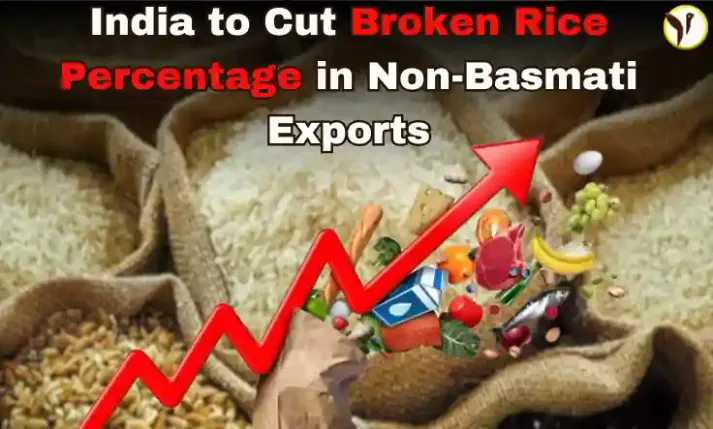In response to soaring food prices and persistent inflation in rice, the Indian government is planning to reduce the proportion of broken rice used in non-basmati rice exports. The move aims to alleviate food inflation concerns and ensure adequate domestic supply amidst escalating prices.
Despite a slight easing in overall food inflation in March, rice prices remained notably high, registering a surge of 12.7%. Retail prices for rice have risen to ₹44.40 per kg, reflecting a year-on-year increase of 13.10%, according to data from the consumer affairs ministry.
To address the situation, the government proposes to slash the amount of broken rice allowed in non-basmati white and parboiled rice exports from the current 25% to a mere 5%. This reduction is expected to bolster domestic supplies, thereby stabilizing prices, as stated by a senior official.
The decision comes after several attempts to curb escalating prices through various measures, including the introduction of Bharat rice, enhanced stock disclosures, and export restrictions. Despite these efforts, prices have continued to rise unabated.
The Directorate General of Foreign Trade (DGFT) has proposed modifications to the quality specifications for rice exports. For instance, in the case of parboiled rice, the broken percentage may be reduced to 5% from the existing 15%. Similarly, for non-basmati white rice, the broken percentage could be lowered from 25% to 5%.
It is noteworthy that the broken percentage of rice exports varies based on the importing country's requirements. For instance, African nations typically accept non-basmati white rice with a 25% broken percentage, while the US demands only 2-3%.
The potential reduction in broken rice percentage is expected to have a significant impact on prices. Currently, 5% broken non-basmati white rice is priced at ₹35,000 per tonne, whereas the same quantity with a 25% broken percentage is priced lower at ₹30,000 a tonne, according to spot traders.
Moreover, the reduction in broken percentage for exports could unlock more rice for domestic industrial uses, such as ethanol production, further aiding in price stabilization.
However, the proposed changes may have implications for overall rice exports, and thus the Department of Commerce has been tasked with assessing the potential impact. Once the assessment is complete, a decision will be made by the concerned authorities.
At present, export of non-basmati white rice is restricted and permitted only on a government-to-government basis, while parboiled rice exports attract a 20% duty.
The government intends to implement the new specifications for non-basmati white rice exports on a government-to-government basis, starting with the next consignment. So far, nearly 2 million tonnes of non-basmati white rice have been exported under the government-to-government route since export restrictions were imposed last July.







